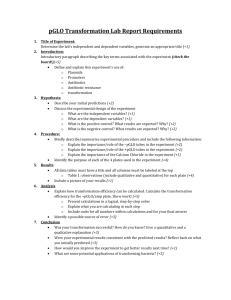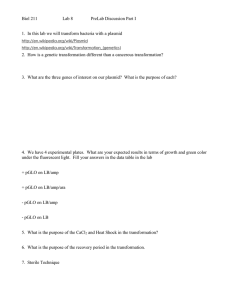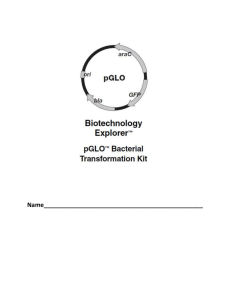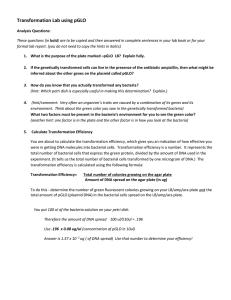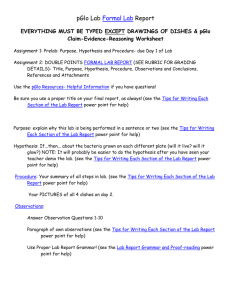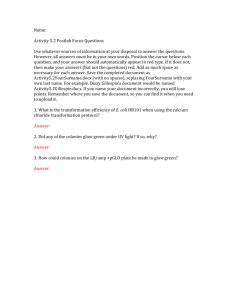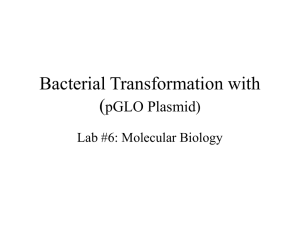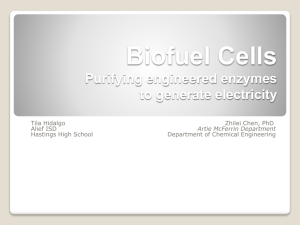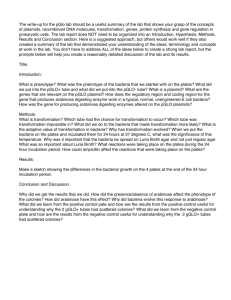pGLO lab - REMC 8 / Kent ISD Moodle VLE
advertisement
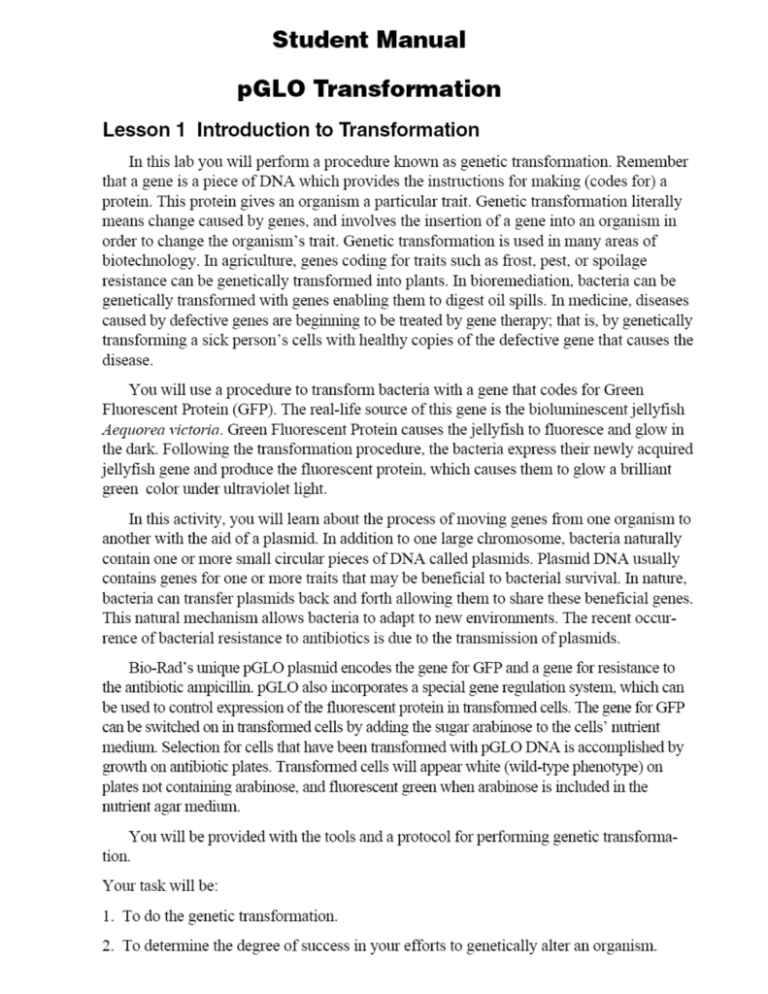
1 2 3 Lab Procedure I. II. HW: Read p. 1-­‐3 of the lab and complete the Moodle pre-­‐lab quiz (Day 1) Obtain “starter plates” and record observations below Starter Plate Observations…think about things like number of colonies, color, size, distribution, if they glow, etc. III. IV. V. VI. VII. (Day 1) Perform transformation (see detailed steps on p. 5 & 6) (Day 1) Make predictions (p. 7) (Day 2) Gather results / record observations (p. 7) (Day 2) Calculate transformation efficiency Write a conclusion 4 5 6 PREDICTED and OBSERVED RESULTS +pGLO LB/amp PREDICTED RESULTS OBSERVED RESULTS +pGLO LB/amp/ara -­‐pGLO LB/amp -­‐pGLO LB Calculating Transformation Efficiency Transformation Efficiency = Total number of cells (colonies) glowing on the agar plate Amount of DNA spread on the agar plate (0.16 µg) Biotechnologists are in general agreement that the transformation protocol that you have just completed generally has transformation efficiency of between 8.0 x 102 and 7.0 x 103 transformants per microgram of DNA. In your conclusion, compare your transformation value with this “accepted range”. 7 IB Biology: Lab Report Grading Sheet—pGLO Lab Total Lab Grade _________ /20 Name: _____________________ 1. DCP1 & DCP2: Data/Data Calculations/Data Presentation (11) a. Data is THOROUGH and are presented in a well-­‐organized manner -­‐ Starter plate observations 0 1 2 -­‐ Predicted results 0 1 2 -­‐ Observed results 0 2 4 0 1 2 0 ½ 1 b. Transformation Efficiency calculated correctly c. Original data sheet is attached with original, rough, raw data 2. CE1: Conclusion (8) a. Observations are used to form a cohesive summary of results 0 2 4 b. Justification (your knowledge of the subject) is used to support conclusion 0 1 2 c. Comparison of your transformation efficiency with “accepted values” 0 1 2 3. General Requirements (1) a. Report is turned in to TURNITIN.COM 8 0 ½ 1
